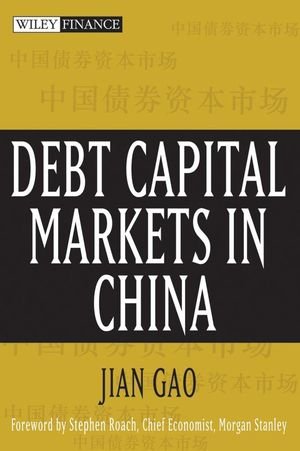[Wiley] Videos
Examine the high yield market for a clear understanding of this evolving asset class
High Yield Debt is the one-stop resource for wealth advisors seeking an in-depth understanding of this misunderstood asset class. The high yield market provides a diverse opportunity set, including fixed and floating rate debt, high and low quality debt issues and both short- and long-term duration; but many fail to understand that not all high yield exposure is the same, and that different market segments and strategies work best at different points in the economic cycle. This guide addresses the confusion surrounding high yield debt. You’ll find the information you need to decide whether or not to buy in to a high yield fund, and how to evaluate the opportunities and risks without getting lost in the jargon.
The U.S. corporate high yield market is worth $2.4 trillion—more than the stock markets of most developed countries. Market growth has increased the number of funds with high yield exposure, as well as the types of debt products available for investment. This book breaks it down into concrete terms, providing the answers advisors need to effectively evaluate the opportunities on offer.
Understand the high yield asset class Learn the debt structures, performance and defaults Evaluate risk and investment opportunities Penetrate the jargon to make sense of high yield investment
Over 300 publicly traded funds provide exposure to U.S. high yield, but despite it’s size and ubiquity, understanding of the asset class as a whole remains somewhat of a rarity—even among participants. A lack of transparency is partially to blame, but the market’s evolution over the past fifteen years is the larger issue. High Yield Debt explains the modern high yield market in real terms, providing a much-needed resource for the savvy investor.
“Rajay Bagaria has written the first book that captures a 360 degree view of the high yield debt market. Whether you are an investor, investment banker, corporate lawyer, CFO or layperson simply trying to gain insights into the fundamentals of high yield debt, this book translates financial and legal concepts, trends and structures of high yield bonds and leveraged loans into a simple, understandable format. Mr. Bagaria’s book is a valuable resource for anyone involved in the new issue or secondary leveraged finance markets.”
—Frank J. Lopez, Co-Head Global Capital Markets, Proskauer
“Bagaria does a great service for both high yield professionals and beginners by providing an accessible, well-written, insightful market primer.”
—Steven Miller, Managing Director, S&P Capital IQ, Leveraged Commentary & Data
“High-Yield Debt – An Insider’s Guide to the Marketplace is a comprehensive book that provides an in-depth understanding of the history, growth, basics and details of high-debt and the high-yield market. The author gives insights that only an experienced professional can provide. The book will be invaluable to readers both starting out and knowledgeable about an important segment of corporate finance, dealing with concepts, structures and performance.”
—Arthur Kaufman, Retired Partner, Fried, Frank, Harris, Shriver & Jacobson LLP / Member of Adjunct Faculty, Columbia Law School
The essential guide to global sukuk markets worldwide
Sukuk Securities provides complete information and guidance on the latest developments in the burgeoning sukuk securities markets. Written by leading Islamic finance experts, this essential guide offers insight into the concepts, design features, contract structures, yields, and payoffs in all twelve global sukuk markets, providing Islamic finance professionals with an invaluable addition to their library. The first book to fully introduce the market, this book provides a detailed overview of the sukuk market, with practical guidance toward applying these instruments in real-world scenarios. Readers will learn how sukuk securities are regulated and the issues that arise from regulations, and gain insight into the foundation and principles of Islamic finance as applied to these instruments. Extensive tables illustrate t-test comparisons between conventional bonds and sukuk, risk factors, and the issuance of different types of sukuk securities by country to give readers a deeper understanding of the markets.
In 2010, the World Bank recommended sukuk as the best form of lending for growth in developing countries; since then, the value of new issues has grown at 45 percent per year. The market’s present size is close to US $1,200 billion, with private markets in major financial centers like London, Zurich, and New York. This book provides comprehensive guidance toward understanding and using these instruments, and working within these markets.
Get acquainted with the sukuk market, definitions, classification, and pricingLearn the different approaches to structuring and contract designDiscover how sukuk is applied, including regulations, ratings, and securitizationExamine payoff structures and suggested sukuk valuation in the context of Islamic finance principles
With the sukuk market growing the way it is, regulators, investors, and students need to fully understand the mechanisms at work. Sukuk Securities is the complete guide to the sukuk markets, with expert insight. July 2014 saw the first sukuk listing in London. Hong Kong and Seoul have also entered this niche market. Predictions are that there will be continued high growth of sukuk debt markets around the world, all providing targeted funding via sukuk contracting modes.
An up-to-date look at the exploding CDO and structured credit products market
In this fully updated Second Edition, financial expert Janet Tavakoli provides readers with a comprehensive look at the CDO and structured credit products market amid recent developments. In addition to a detailed overview of the market, this book presents key issues in valuing structured financial products and important quality control issues. Tavakoli shares her experiences in this field, as she examines important securitization topics, including the huge increase in CDO arbitrage created by synthetics, the tranches most at risk from new technology, dumping securitizations on bank balance sheets, the abuse of offshore vehicles by companies, the role of hedge funds, critical issues with subprime, Alt-A, and prime mortgage securitizations, and securitizations made possible by new securitization techniques and the Euro. While providing an overview of the market and its dynamic growth, Tavakoli takes the time to explore the types of products now offered, new hedging techniques, and valuation and risk/return issues associated with investment in CDOs and synthetic CDOs.
Since first edition’s publication, the CDO market has seen tremendous growth. As of 2005, $1.1 trillion of CDOs were outstanding — making them the fastest-growing investment vehicle of the last decade. To help you keep up with this expanding market and its various instruments, Douglas Lucas, Laurie Goodman, and Frank Fabozzi have collaborated to bring you this fully revised and up-to-date new edition of Collateralized Debt Obligations. Written in a clear and accessible style, this valuable resource provides critical information regarding the evolving nature of the CDO market. You’ll find in-depth insights gleaned from years of investment and credit experience as well as the examination of a wide range of issues, including cash CDOs, loans and CLOs, structured finance CDOs and collateral review, emerging market and market value CDOs, and synthetic CDOs. Use this book as your guide and take advantage of this dynamic market and its products.
Product Features
- Collateralized Debt Obligations
- Structures
- Analysis
An in-depth look at China’s burgeoning capital markets
Author Jian Gao is the number one authority on fixed income markets in China, and with this book, he brings his considerable experience and knowledge about these markets to investors worldwide. For those interested in becoming active in China’s growing fixed income markets, Debt Capital Markets in China is the book you need to get started. It includes coverage of the primary and secondary markets, government debt instruments, corporate bonds, the collateralized bond market, and asset-backed securitizations. Debt Capital Markets in China also examines the developing market trends, which affect investors and institutions looking to make the most of this incredible financial opportunity.
Dr. Jian Gao, PhD (Beijing, China) is the Vice Governor of China Development Bank (CDB).





